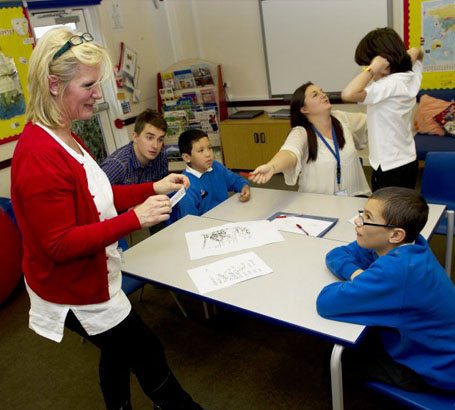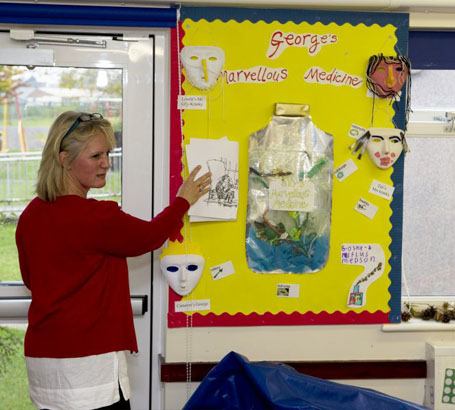
Three theorists who have had particularly influential ideas on communicating in learning are:
- Jean Piaget who saw the importance of children as active learners, needing to handle and manipulate the physical environment as the basis for all understanding about their world.
- Lev Vygotsky who highlighted the significance of adults and older peers in extending children's learning and teaching them about their society, with communication central to this process.
- Jerome Bruner who identified the importance of how adults 'scaffold' support using different strategies towards children's eventual understanding.

All three theorists emphasised the value of play and talk.
- Piaget highlighted the need for carefully planned developmentally appropriate activity.
- Vygotsky saw the value of play and talk for motivating the child and sharing experience.
- Bruner underlined the importance of providing multisensory ways to help understanding.

In any classroom, the teacher should use and encourage a range of communication strategies to support the spoken and written word.
Some children will need real objects, some may need photos or picture prompts. Some may be able to use more abstract symbols. Others will understand words.
All children, whatever their level of ability, will need to be engaged in the lesson if they are to learn.
In this clip of a special school, look for the influence of Piaget, Vygotsky and Bruner:
- Manipulating physical objects;
- Extending children’s learning;
- Scaffolding children’s learning;
- Carefully planned, developmentally appropriate activity; and
- Multi-sensory teaching.

Bruner proposed three distinct ways of storing and encoding information in the memory:
- Enactive (actions) – this appears first. It involves encoding action-based information and storing it in our memory.
- Iconic (pictures) – where information is stored visually, in the form of images. This may explain why, when we are learning something new, it is often helpful to have diagrams or illustrations to accompany verbal information.
- Symbolic (words and numbers) – this develops last. It is where information is stored in the form of a code or symbol, such as language.
Bruner's theory suggests it is effective when faced with new material to follow a progression from enactive to iconic to symbolic representation.

Bruner's model can be used to derive the principles for supporting communication for children with SLD/PMLD/CLDD.
- Initially, children may need to associate a new word with the actual object or physical action.
- They may then recall the word or concept and its meaning through a visual support. This can be made increasingly abstract, eg moving from an object to a photograph, then a drawing, then a line drawing and finally a symbol.
- Eventually children will come to know the word without any support.
Where children seem not to have grasped a concept, teachers can move back through the levels, giving children more support to aid understanding.
